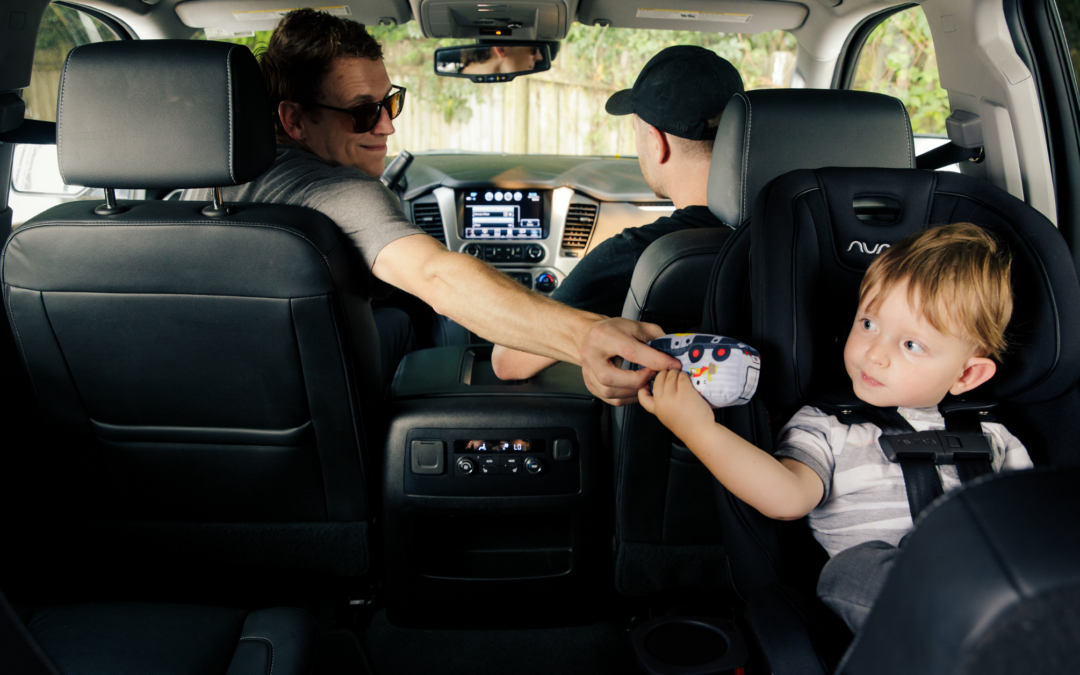Air bags are designed to protect drivers and passengers from serious injuries in a crash. They inflate rapidly and cushion the impact of the collision. However, air bags can also pose some risks, especially for children in car seats. Here are some tips on how to use airbags and car seats safely.
Frontal Air Bags

Frontal air bags are standard equipment in all modern cars as they have been required since 1999 in the United States. They deploy from the steering wheel and the dashboard to protect the driver and the front-seat passenger from hitting the windshield or the dashboard. Frontal air bags can save lives, but they can also injure or kill children in car seats if they are not used properly.
The most important rule is to NEVER place a rear-facing car seat in the front seat of a vehicle with an active frontal air bag. This is because the air bag can hit the back of the car seat and cause severe head and neck injuries to the child. With very few exceptions, rear-facing children should always ride in the back seat of the vehicle. If your vehicle has a physical on/off switch for the passenger air bag or if the vehicle is too old to have air bags, putting a rear-facing child in the front seat may be an option. But those are the only exceptions and you should consult a Child Passenger Safety Technician (CPST) first to make sure that it is your best option.
Older children who are using a forward-facing harnessed car seat should also ride in the back seat whenever possible. In addition to having frontal air bags, the front seats lack a top tether anchor in most cases. This is a crucial component for the safety of a forward-facing child. If you have to place a forward-facing car seat in the front seat, make sure to move the seat as far back as possible. But this should be an absolute last resort. If at all possible, put someone older upfront.
Children who are riding in high back and backless booster seats should also be riding in the back of the vehicle. If you must have a booster-aged child in the front seat, it is recommended to use a backless booster or the Ride Safer Travel Vest and to have the vehicle seat pushed back as far as possible.
Adults should always wear their seat belts and adjust their seats to allow at least 10 inches of space between their chest and the air bag. They should also avoid leaning forward or placing objects on their lap that could interfere with the air bag deployment. Adults should keep their feet on the floor of the vehicle and refrain from placing them on the dashboard or out of the window if they prefer to avoid horrifying injuries/possible death.
Side Air Bags

Side air bags are found in most vehicles from 2014 onward. They deploy from the side of the seat or the door panel. This type of air bag is meant to protect you from hitting the interior of the vehicle. The National Highway and Traffic Safety Administration (NHTSA) has investigated many crashes involving children and there are no known risks of serious injuries or fatalities at this time. You can install your car seats in outboard vehicle seats as usual, without fear of injuries from this type of air bag.
Mercedes Rear Air Bags

In 2021, Mercedes-Benz introduced a new feature on some of its S-Class sedan models: frontal air bags for the back seat. These air bags are designed to protect rear-seat passengers from hitting the front seats or each other in a frontal crash. They deploy from the back of the front seats and create a cushion between the passengers.
These air bags are still new and not widely available, so there is not much information on how they affect car seats. However, Mercedes-Benz states that these air bags can be disabled via the multimedia system. We would recommend doing that if you are using car seats of any kind in the back seat at this time. But for teens and adults, this is a great safety feature! We love seeing new innovations that help improve the safety of the backseat passengers.
Prioritizing safety and adhering to recommended guidelines is the key to protecting our little ones on the road.
Air bags and car seats are both important safety features that can protect you and your child in a crash. However, they need to be used correctly to avoid injuries or fatalities. Frontal air bags are made with adult bodies in mind, so if you can fit all of the kids in the back, that is where they should go. For more information on when a child can start sitting up front, head to this post!
Affiliate links are included above. Safe in the Seat earns a small commission when you purchase through these links with no cost to you. We so appreciate your support.

